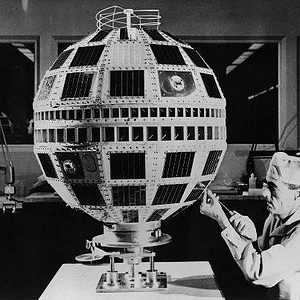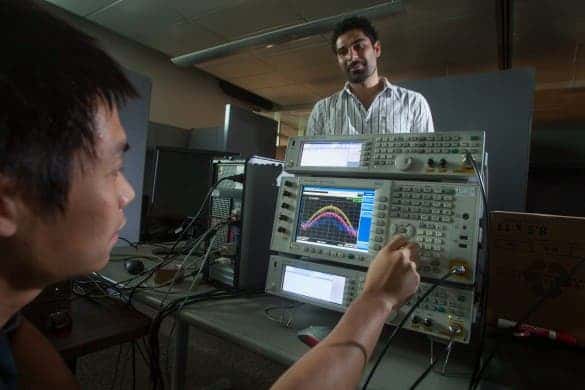Exactly 50 years ago, on July 12 1962, the the world’s first active communications satellite, Telstar 1, transmitted the first live television signal by satellite. During this historic day, a live television program was for the first time beamed across the Atlantic in Europe, an event saluted by the people of the time as a technological marvel.

Today, when approximately 3000 satellites are orbiting the Earth, people tend to take truly marvelous telecommunication feats for granted. The world has been getting smaller by minute since Telestar 1 was first launched into space, bringing people closer together. It’s important to note and understand that today’s easy access to information and instant communication from any point on the globe has been made possible by progress, sparked by pioneering work – like in most fields of science.
The first images beamed to Earth in that broadcast included the views of the Statue of Liberty, the Eiffel Tower, remarks from President John F. Kennedy, clips from a baseball game between the Philadelphia Phillies and the Chicago Cubs, shots of the American flag waving in the breeze, and images of French singer Yves Montand.
“Live broadcast of events happening throughout the world are taken for granted today, but 50 years ago transmissions enabled by Telstar captured the attention and imaginations of people everywhere,” Wayne Clough, secretary of the Smithsonian, said in a statement. “The 50th anniversary reminds us how far we have come, and how much potential there is [in] the new era of digital communications.”
Telstar only operated for a few months, during which it transmitted more than 400 telephone, telegraph, fax and television transmissions. As the first privately developed telecommunications satellite, Telstar 1 served as a test bench for future designs. Today, satellites are fully powered by solar energy, orbit the Earth at a greater distance and with the planet’s velocity, thus becoming relatively stationary, and can withstand the harsh radiation of the environment in space.




